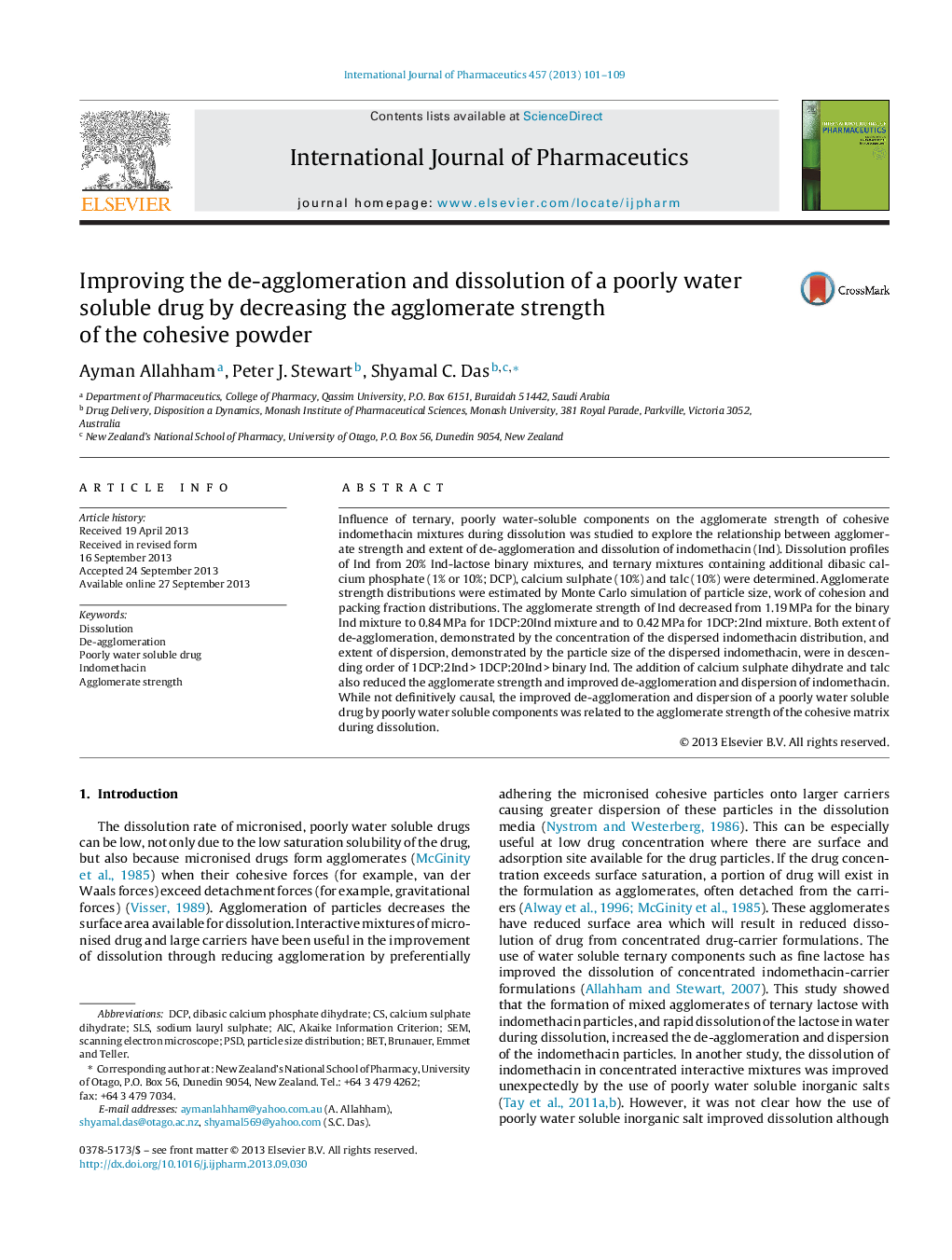| Article ID | Journal | Published Year | Pages | File Type |
|---|---|---|---|---|
| 5820104 | International Journal of Pharmaceutics | 2013 | 9 Pages |
Abstract
Influence of ternary, poorly water-soluble components on the agglomerate strength of cohesive indomethacin mixtures during dissolution was studied to explore the relationship between agglomerate strength and extent of de-agglomeration and dissolution of indomethacin (Ind). Dissolution profiles of Ind from 20% Ind-lactose binary mixtures, and ternary mixtures containing additional dibasic calcium phosphate (1% or 10%; DCP), calcium sulphate (10%) and talc (10%) were determined. Agglomerate strength distributions were estimated by Monte Carlo simulation of particle size, work of cohesion and packing fraction distributions. The agglomerate strength of Ind decreased from 1.19 MPa for the binary Ind mixture to 0.84 MPa for 1DCP:20Ind mixture and to 0.42 MPa for 1DCP:2Ind mixture. Both extent of de-agglomeration, demonstrated by the concentration of the dispersed indomethacin distribution, and extent of dispersion, demonstrated by the particle size of the dispersed indomethacin, were in descending order of 1DCP:2Ind > 1DCP:20Ind > binary Ind. The addition of calcium sulphate dihydrate and talc also reduced the agglomerate strength and improved de-agglomeration and dispersion of indomethacin. While not definitively causal, the improved de-agglomeration and dispersion of a poorly water soluble drug by poorly water soluble components was related to the agglomerate strength of the cohesive matrix during dissolution.
Keywords
Related Topics
Health Sciences
Pharmacology, Toxicology and Pharmaceutical Science
Pharmaceutical Science
Authors
Ayman Allahham, Peter J. Stewart, Shyamal C. Das,
